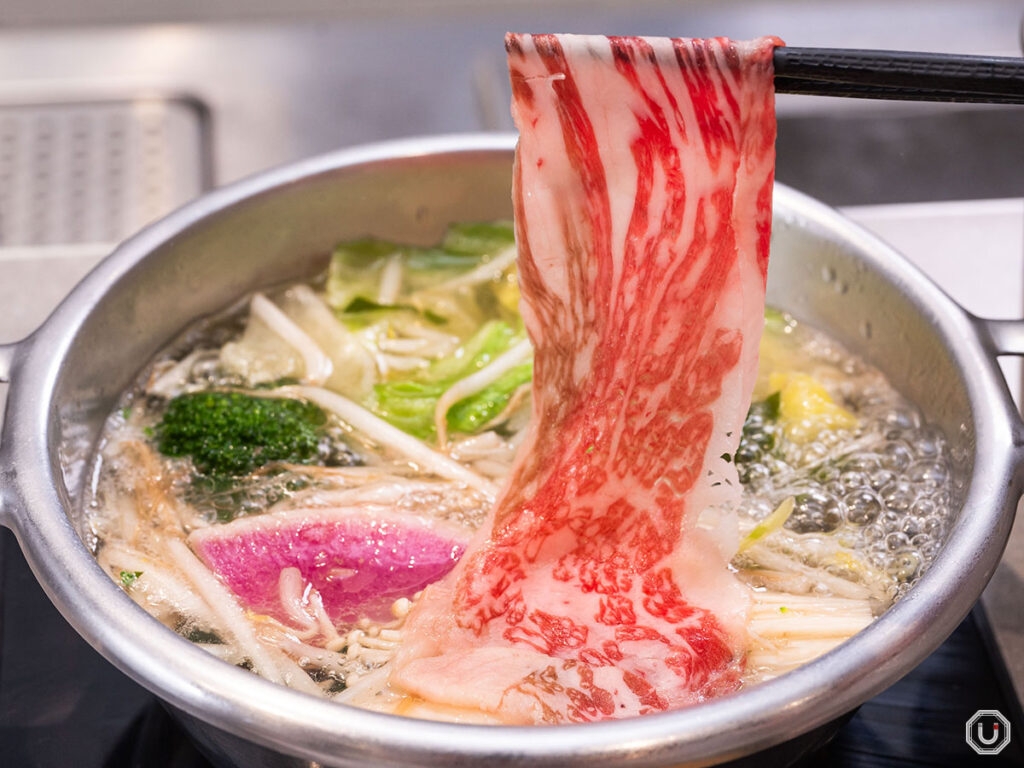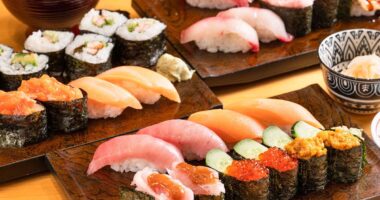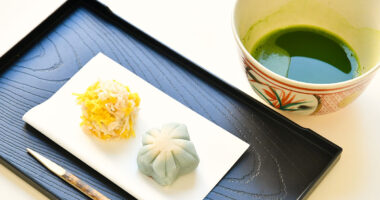Japanese hot pot cooking, known for its rich flavors and communal dining experience, is a must-try in Tokyo. From the savory sweetness of sukiyaki to the delicate broth of shabu-shabu, these dishes offer warmth and comfort in every bite. In this guide, we’ll introduce some of the best spots to enjoy authentic Japanese hot pot!
- Solo sukiyaki and shabu-shabu dining in Shinjuku: Shabu Shabu MATSUGORO
- Super kawaii bunny hot pot: Shabu-shabu Honpo Shinjuku Usagiya
- Premium wagyu and uni sukiyaki in Shibuya: IKUSHIKA
- Solo Kobe beef shabu-shabu with so many condiments: Shabu-Shabu Retasu Shibuya Center-gai
- Delicious Hokkaido cuisine in Shibuya: Akutoridaikan Nabenoshin
- Chicken hot pot at a 60-year-old yakitori restaurant near Shibuya Station: Toritake
- All-you-can-eat sukiyaki, tempura, and sushi in Roppongi: Shabu-shabu Sushi Hassan
- All-you-can-eat shabu-shabu with different soup bases: Mo-Mo PARADISE Shinjuku Higashiguchi
- Rich chicken hot pot: Hakata Jidori Fukuei Kumiai Shibuya
- Wagyu beef sukiyaki at a traditional Japanese restaurant: Kioichō Kichiza
Solo sukiyaki and shabu-shabu dining in Shinjuku: Shabu Shabu MATSUGORO
Many Japanese hot pot dishes, such as sukiyaki or shabu-shabu, are often enjoyed as communal meals. There is a growing trend of restaurants where solo-diners can enjoy hot pot on their own, however, and “Hitori Shabu-shabu Nanadaime Matsugorou Shinjuku TOHO Building” (referred to hereafter as “Shabu Shabu MATSUGORO”) is the perfect place for international travelers to try that style of restaurant out!

At this restaurant, customers can enjoy their choice of either sukiyaki or shabu-shabu. While it has a solo-dining appeal, the meals are plentiful and high quality at affordable prices. For instance, their sukiyaki uses A5-grade wagyū beef. The restaurant also uses no water in their sukiyaki broth, meaning it packs the sweet and rich flavors from simmered meat and vegetables.

And if you’re unsure how to cook it, staff will gladly help you out.
For the shabu-shabu, customers can choose from beef, pork, and chicken as their meat in different sizes. While you can create your own combination of meat and veggies, it’s recommended to get a set with rice and vegetables. The restaurant’s special ponzu sauce—developed over two years!—has a tartness that pairs perfectly with the umami of the meat.

To experience the fun of solo-dining in Tokyo and have shabu-shabu and sukiyaki your way, be sure to drop by Shabu Shabu MATSUGORO!
Super kawaii bunny hot pot: Shabu-shabu Honpo Shinjuku Usagiya
“Shabu-shabu Honpo Shinjuku Usagiya” (referred to hereafter as “Usagiya”) is a restaurant where the delicious shabu-shabu hot pot may just be too cute to eat!

The restaurant offers multiple course options, but each feature shabu-shabu hot pot soup, with different types like sesame soy milk, kombu (kelp), and sukiyaki-style among the eight varieties available. Depending on the course, you can enjoy different types of meat like pork loin, chicken breast, or wagyu beef. Regardless of your choice, be sure to go for the “Usapyon Dashi” option.
This is an addition of kombu stock in the form of an adorable bunny! Enjoy the cute image of a bunny enjoying a hot “bath” as it dissolves into your shabu-shabu and adds even more great flavor!

For both a delicious and photogenic hot pot, head to Usagiya in Shinjuku!
Premium wagyu and uni sukiyaki in Shibuya: IKUSHIKA
Sukiyaki is a luxurious dish in its own right, but at “IKUSHIKA,” you can enjoy a set that really raises the bar for extravagance! IKUSHIKA offers a premium sukiyaki set that features not only high grade wagyu beef, but uni (sea urchin) and salmon roe as toppings.

You can cook the beef to your preferred doneness, but because it’s such high quality wagyu, it may be best to keep it medium-rare to truly appreciate its flavor. Once it’s ready, use it to wrap up uni and salmon roe, dip in sauce, and enjoy over rice! The flavors of these premium ingredients harmonize perfectly. You can also add sauce to the beef as it simmers to unlock a richer flavor.


Located in the popular Shibuya PARCO complex, IKUSHIKA offers an opportunity to dine on truly luxurious sukiyaki!
Solo Kobe beef shabu-shabu with so many condiments: Shabu-Shabu Retasu Shibuya Center-gai
Solo shabu-shabu dining means getting to enjoy your own personal pot of delicious meat and vegetables, and at “Shabu-Shabu Retasu Shibuya Center-gai,” you can really indulge yourself with their “Kobe Beef Course.” Not only do you get four different cuts of the world-famous Kobe beef, but also pork, vegetables, tofu, boiled gyoza dumplings, rice, and Chinese-style noodles!

This loaded course is worth it just for the incredibly tender beef, but is made all the better by a selection of over 30 condiments and seasonings to customize your shabu-shabu! This includes ponzu, sesame sauce, olive oil, rock salt, and shichimi (Japanese seven spice). You can mix and match any number of them to create your favorite flavor combinations.


Many people travel to Japan with the hope of trying out Kobe beef. At Shabu-Shabu Retasu Shibuya Center-gai, you can do so in a hearty shabu-shabu set and customize its flavor to your liking!
Delicious Hokkaido cuisine in Shibuya: Akutoridaikan Nabenoshin
If you’d like to expand your horizon beyond sukiyaki and shabu-shabu with some seafood flavor, “Akutoridaikan Nabenoshin” in Shibuya is just the place to do it. Their “Salmon, Scallop, and Shrimp Rich Butter Miso Nabe” offers a winter Hokkaido specialty available all year round.

The pot contains four generously cut slices of salmon, scallops, shrimp, small shrimp, and packs rich seafood flavor. It’s topped off by corn and butter, which is quite prevalent in Hokkaido cuisine.

The inclusion of sake lees (the leftover product after sake is pressed) provides a unique sweetness that pairs perfectly with the richness of the miso!

Akutoridaikan Nabenoshin offers a great way to sample Hokkaido’s culinary scene without leaving Tokyo, and to mix things up with a seafood touch.
Chicken hot pot at a 60-year-old yakitori restaurant near Shibuya Station: Toritake
“Toritake” is a well-known yakitori (chicken skewers) restaurant in Shibuya, so they know a thing or two about delicious poultry. You can taste that expertise in a special chicken sukiyaki served at the restaurant. The chicken bone broth separates it from the standard soy sauce and sugar base of other sukiyaki, giving it a refreshing flavor.

The nabe is packed with thigh and breast meat, as well as other ingredients like Chinese cabbage, Japanese leek, chrysanthemum greens, enoki mushrooms, shirataki noodles, and tofu. Be sure to dip the well-seasoned chicken into a beaten egg to unlock a wonderfully balanced flavor combination of rich and mild.


Some customers finish their meal by ordering udon noodles or rice to put in the leftover broth, which has soaked up all the great flavor of the chicken and the other ingredients.
Toritake in Shibuya is a great restaurant to explore the chicken side of sukiyaki, and you can also order some yakitori to go along with it!
All-you-can-eat sukiyaki, tempura, and sushi in Roppongi: Shabu-shabu Sushi Hassan
All-you-can-eat sukiyaki is an enticing enough reason to visit “Shabu-shabu Sushi Hassan” in Roppongi, but the fact that you can enjoy it alongside sushi and tempura elevates it to a must-visit! The meat here is exquisite, with course options that include Kuroge (Japanese Black) wagyu, premium Kuroge wagyu, and Matsusaka beef.

The key to this restaurant is their warishita, a soy-based sauce used for sukiyaki. Shabu-shabu Sushi Hassan uses a less sweet version, giving their sukiyaki a refreshing flavor. Spread beef fat and this sauce on the bottom of the pot, and then it’s time to add the meat. Its fine marbling absorbs the warishita that unleashes a deep and rich flavor.

When combined with ingredients like napa cabbage, tofu, shiitake mushrooms, king oyster mushrooms, and onions, you’re guaranteed a filling meal with a wide variety of flavors all in one dish. These ingredients are also all-you-can eat.

The fact that you can enjoy 20 kinds of sushi and a tempura platter along with this excellent sukiyaki is the definition of luxury!

For a fulfilling sukiyaki experience accompanied by other classic Japanese food, you won’t want to miss Shabu-shabu Sushi Hassan in Roppongi.
All-you-can-eat shabu-shabu with different soup bases: Mo-Mo PARADISE Shinjuku Higashiguchi
“Mo-Mo PARADISE” is a name well-known by hot pot enthusiasts around the world. The Shinjuku East Exit branch of the popular restaurant is a dining hot spot thanks to a number of all-you-an-eat courses, as well as a choice of four soups: “Shabu-Shabu,” “Sukiyaki,” “Shio-Tonkotsu (salted pork bone broth),” and “Kimchi.” For an additional fee, you choose two soup bases to enjoy.

The popular “Japanese Beef Course” includes Chuck Roll, Shoulder Clod, Flank, Boston Butt, and Pork Belly. The shabu-shabu base is recommended as it allows you to most clearly appreciate the meat’s natural flavor.

Customers can also create their own dipping sauces using an international lineup of condiments, including hot chili sauce, garlic vinegar, and Sriracha sauce.

Mo-Mo PARADISE Shinjuku Higashiguchi is definitely a restaurant in Tokyo you can count on for a wide option of flavors and quality ingredients.
Rich chicken hot pot: Hakata Jidori Fukuei Kumiai Shibuya
Located just a short walk from Shibuya Station, “Hakata Jidori Fukuei Kumiai Shibuya” is a refined Japanese restaurant that specializes in serving dishes made with Hakata jidori, a famous chicken brand from Fukuoka Prefecture. One of their standout dishes is their “Whole Hakata Jidori Collagen Mizutaki Nabe,” which is a take on mizutaki nabe, a hot pot dish originating in Fukuoka.
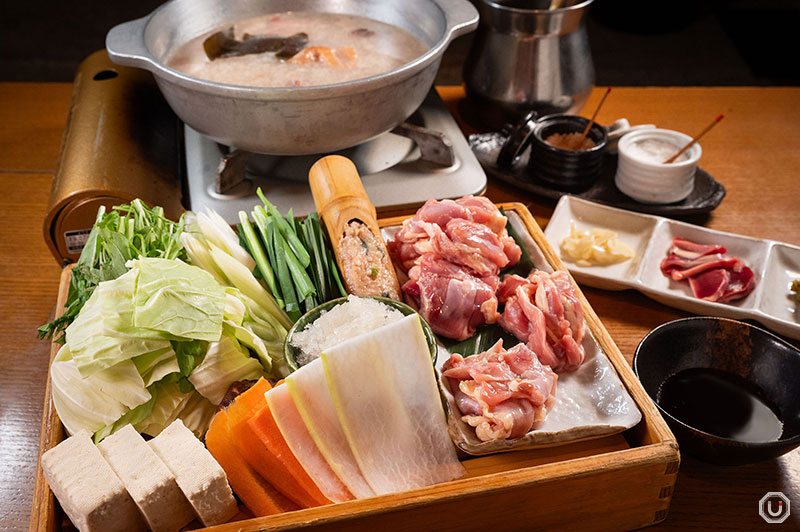
This hot pot is made using collagen and five different parts of the Hakata jidori chicken, and a good amount of vegetables. As the chicken boils longer and the collagen is added in, the soup becomes fragrant and smooth, and the umami of the chicken is extracted.

Customers can choose from dumplings, ramen, or zōsui (Japanese rice porridge) as a finish to the meal. The rice porridge allows you to really appreciate the flavor of the remaining broth. Pour it over rice, mix in a beaten egg, and top it off with green onions and sesame seeds for a satisfying end to the meal.

Hakata Jidori Fukuei Kumiai Shibuya is highly recommended to those looking for a taste of chicken soup in their hot pot.
Wagyu beef sukiyaki at a traditional Japanese restaurant: Kioichō Kichiza
For one of the most refined sukiyaki experiences in Tokyo, look no further than “Kioichō Kichiza.” The restaurant’s kaiseki (traditional Japanese multicourse meals) is highlighted by wagyu sukiyaki, featuring finely-cut Kuroge wagyu beef. While the sukiyaki is certainly the main course, one of the the appeals of kaiseki is the seasonal side dishes, which Kioichō Kichiza prepares with meticulous care.

At Kioichō Kichiza, staff (dressed in kimono) prepare the meal for you. This is to guarantee the optimal cooking time for each ingredient and to match the diner’s pace. The beef, which has rich umami, is simmered in a warishita that has a subtle sweetness to bring out the perfect balance.

The result is expertly prepared sukiyaki that you can enjoy with beaten egg, on its own, or with rice. Be sure to try all the wonderful seasonal ingredients to truly taking in this classic Japanese dining experience!
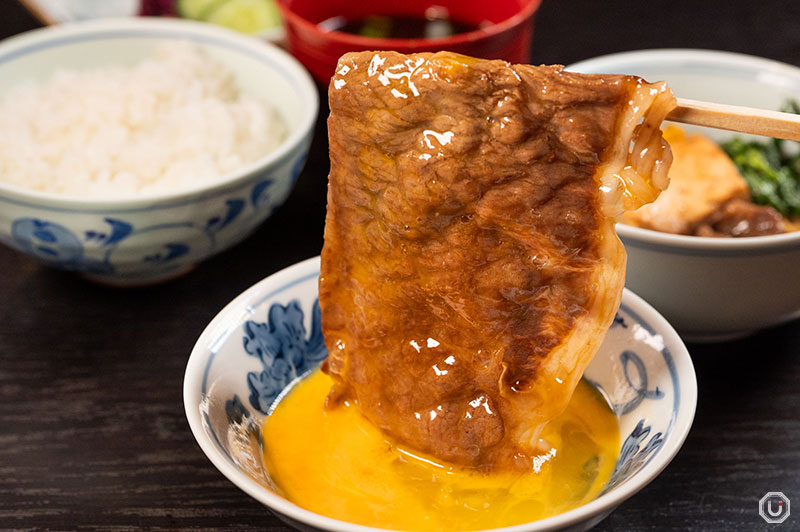
Kioichō Kichiza offers a high-end sukiyaki experience, uniquely complemented by a wide array of seasonal Japanese kaiseki ingredients!
Japanese hot pot is more than just a meal—it’s an experience that brings people together over rich flavors and comforting warmth. Whether you prefer the sweetness of sukiyaki or the lightness of shabu-shabu, Tokyo’s hot pot spots offer something for everyone. Don’t miss the chance to savor this quintessential Japanese dining tradition!
